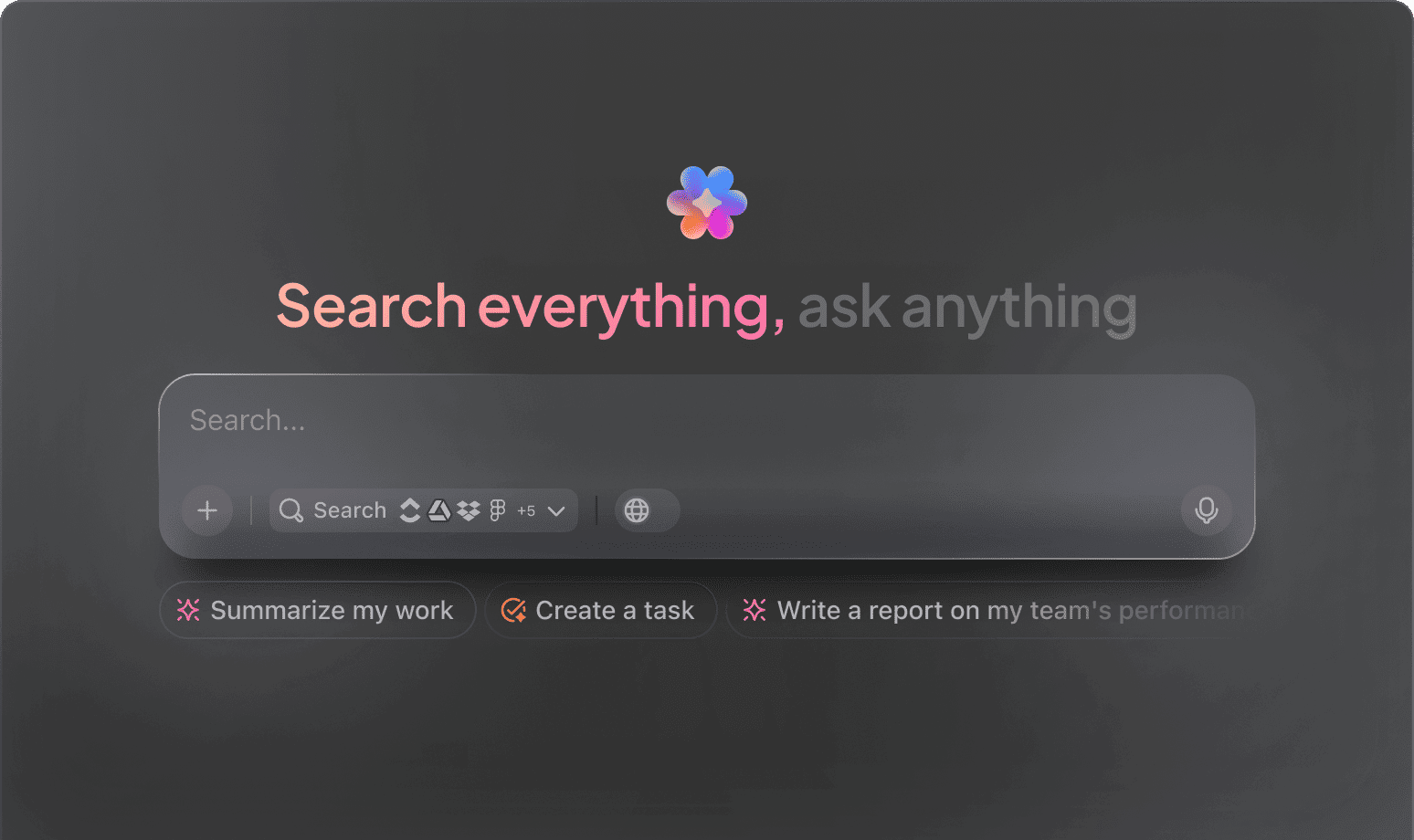AI Expository Writing
Top AI Prompts for Expository Writing
Craft clear, compelling explanations, organize your ideas effortlessly, and elevate your writing projects with ClickUp AI.
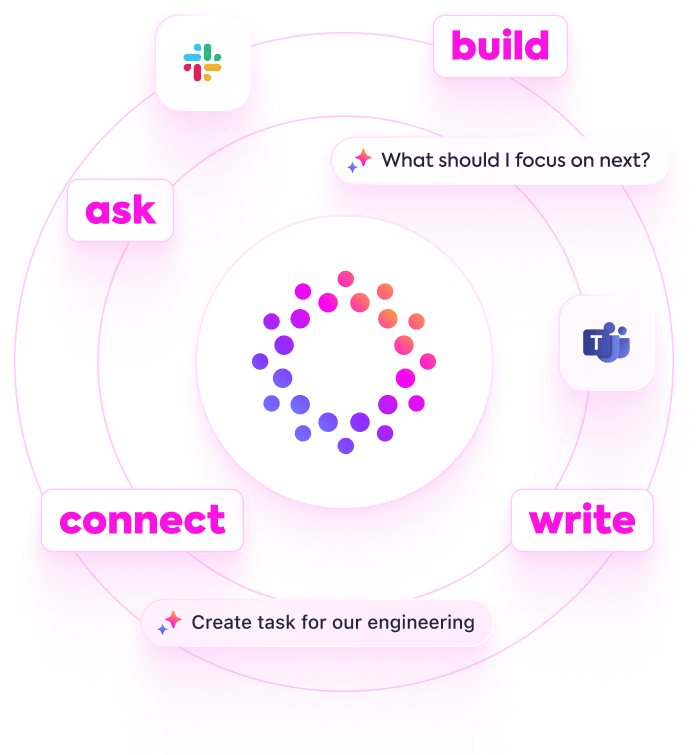
Trusted by the world’s leading businesses
AI Empowering Expository Writers
Revolutionizing Expository Writing with AI Prompts in ClickUp Brain
Crafting clear, insightful expository pieces goes beyond just putting words on a page—it demands thorough research, structured arguments, and precise clarity.
From gathering credible sources to organizing ideas and refining drafts, expository writing requires juggling multiple steps and deadlines. That's where AI prompts step in to make a real difference.
Writers and teams now leverage AI to:
- Quickly identify key facts and relevant information
- Generate detailed outlines and logical flow with minimal effort
- Simplify complex topics into digestible explanations
- Transform scattered notes into coherent drafts and task lists
Integrated seamlessly into familiar tools like documents, whiteboards, and project trackers, AI in platforms such as ClickUp Brain acts as a smart collaborator, converting your research and ideas into structured, manageable writing projects.
Comparing ClickUp Brain with Conventional Solutions
Why ClickUp Brain Stands Apart
ClickUp Brain integrates seamlessly with your workflow, understands your context, and empowers you to focus on writing, not setup.
Standard AI Platforms
- Constantly toggling between apps to collect information
- Repeating your objectives with every new prompt
- Receiving generic, irrelevant suggestions
- Hunting through numerous platforms to locate a single document
- Interacting with AI that lacks initiative
- Manually switching between different AI engines
- Merely an add-on in your browser
ClickUp Brain
- Instantly accesses your projects, notes, and team communications
- Keeps track of your writing progress and intentions
- Delivers insightful, tailored guidance
- Searches across all your resources in one place
- Supports hands-free input with voice commands
- Automatically selects the optimal AI model: GPT, Claude, Gemini
- Dedicated desktop application for Mac & Windows optimized for performance
Expository Writing Prompts
15 Powerful AI Prompts for Expository Writing (Tested in ClickUp Brain)
Enhance your expository writing process—research, structure, and clarity simplified.

Identify 5 compelling thesis statements for an essay on climate change, based on the ‘Climate Research 2024’ document.
Use Case: Accelerates idea generation by leveraging existing research insights.
ClickUp Brain Behaviour: Analyzes linked documents to extract central arguments and suggests focused thesis options.

What are the current trends in educational technology adoption in K-12 schools across the US?
Use Case: Supports data-driven content creation with up-to-date sector insights.
ClickUp Brain Behaviour: Compiles key findings from internal reports; Brain Max can supplement with verified public data if accessible.

Draft an outline for an expository essay on renewable energy benefits, referencing notes from ‘Energy Studies’ and previous drafts.
Use Case: Aligns writers with a clear, organized framework for content development.
ClickUp Brain Behaviour: Extracts relevant points and structures them into a coherent essay outline.

Summarize comparative data on water conservation methods from the ‘Sustainability Q1’ report.
Use Case: Facilitates quick understanding of key differences without manual data review.
ClickUp Brain Behaviour: Processes tables and text from documents to produce a concise comparison summary.

List top five credible sources on the impact of social media on mental health, referencing research notes and bibliographies.
Use Case: Assists writers in sourcing authoritative references efficiently.
ClickUp Brain Behavior: Scans linked materials to identify frequently cited and reputable studies with summaries.

From the ‘Essay Evaluation Criteria’ document, generate a checklist for assessing clarity and coherence in expository writing.
Use Case: Streamlines peer review and self-editing processes with structured guidelines.
ClickUp Brain Behavior: Extracts evaluation points and formats them into an actionable checklist within a task or document.

Summarize three emerging techniques for improving reader engagement in expository essays from recent writing workshops and articles.
Use Case: Keeps writing strategies current and evidence-based.
ClickUp Brain Behavior: Identifies recurring themes and effective methods from linked educational content.

From the ‘Student Feedback Q2’ document, summarize key preferences for essay structure and style.
Use Case: Helps educators tailor guidance to common student needs and expectations.
ClickUp Brain Behavior: Analyzes survey data to highlight prevalent trends and suggestions.

Compose concise and engaging introduction paragraphs for an essay on digital privacy, using tone guidelines from ‘WritingStyleGuide.pdf’.
Use Case: Speeds up drafting with consistent voice and style.
ClickUp Brain Behavior: Draws on tone references to propose varied introduction samples for user selection.

Summarize recent changes in citation standards (APA 7th edition) and their implications for academic writing.
Use Case: Ensures writers stay compliant with updated formatting requirements.
ClickUp Brain Behavior: Condenses official guidelines and highlights key updates from linked resources.

Generate formatting and submission guidelines for expository essays based on university-specific requirements stored in workspace documents.
Use Case: Guarantees adherence to institutional standards.
ClickUp Brain Behavior: Extracts rules and compiles a clear checklist for writers to follow.

Create a revision checklist focusing on argument support and evidence quality, referencing ‘Critical Thinking Rubric’ and sample essays.
Use Case: Enhances essay quality through targeted self-assessment.
ClickUp Brain Behavior: Identifies key criteria and organizes them into a practical review tool.

Compare approaches to explaining complex scientific concepts in essays by analyzing examples from ‘Science Writing Samples’ folder.
Use Case: Supports writers in selecting effective explanatory techniques.
ClickUp Brain Behavior: Summarizes stylistic differences and effectiveness in a clear, comparative format.

What are the emerging themes in expository writing pedagogy since 2022?
Use Case: Guides curriculum development with insights from recent educational research.
ClickUp Brain Behavior: Synthesizes trends from academic papers, conference notes, and teaching materials.

Summarize common challenges students face in organizing expository essays, based on feedback collected from the ‘Writing Center’ and tutoring session notes.
Use Case: Informs targeted support strategies to improve student writing outcomes.
ClickUp Brain Behavior: Extracts and prioritizes frequent issues reported across multiple feedback sources.
Elevate Your Expository Writing with ClickUp Brain
Cut down revisions, unify your team’s efforts, and craft clearer, more compelling expository content using AI-driven workflows.





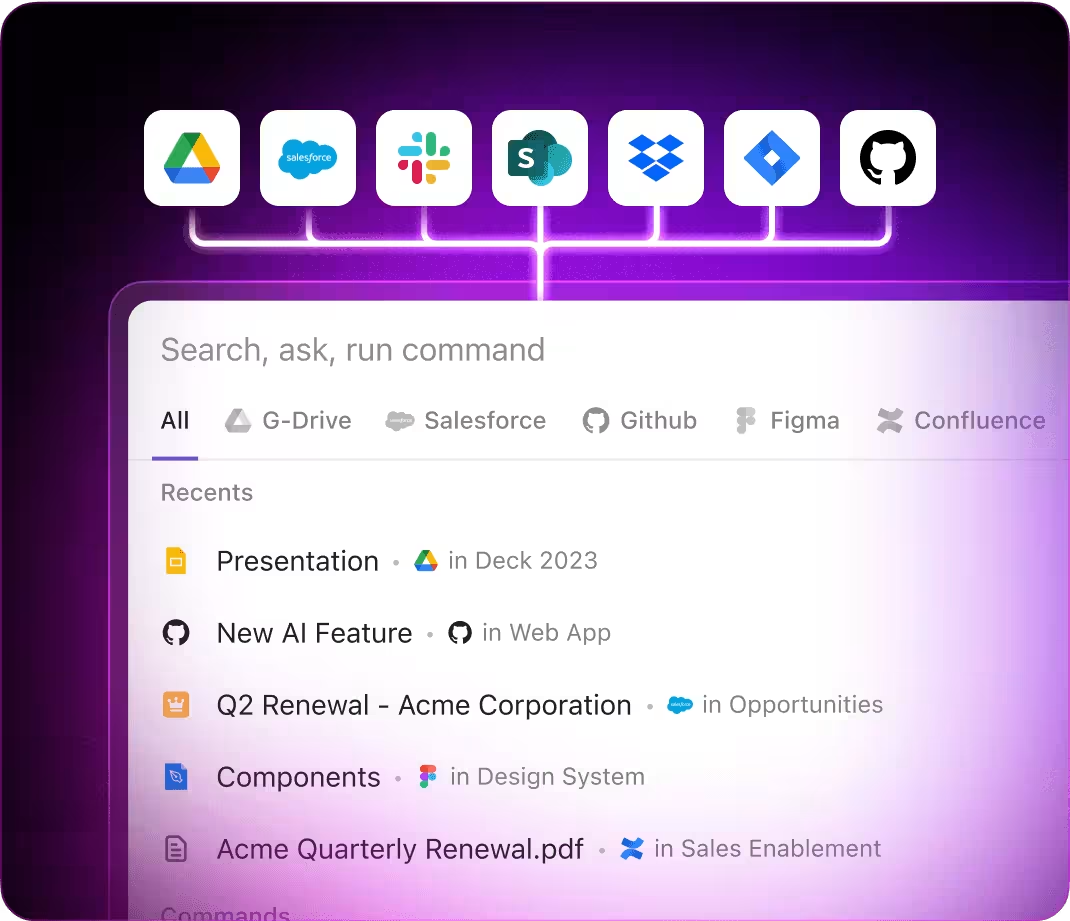
AI Writing Solutions
Leading 3 Applications of AI Prompts in Expository Writing with ClickUp Brain
Enhance clarity, boost consistency, and generate insightful content effortlessly using AI-powered prompts in your writing process.
From Rough Drafts to Clear Expository Documents
Starting with fragmented ideas and unorganized notes is common in expository writing. ClickUp Brain organizes these into coherent, shareable documents—right inside ClickUp Docs.
Leverage ClickUp Brain to:
- Convert scattered thoughts into polished writing outlines
- Produce fresh content inspired by previous research and drafts (using context-sensitive AI assistance)
- With Brain Max, instantly access earlier reports, references, and notes to enrich your current exposition.
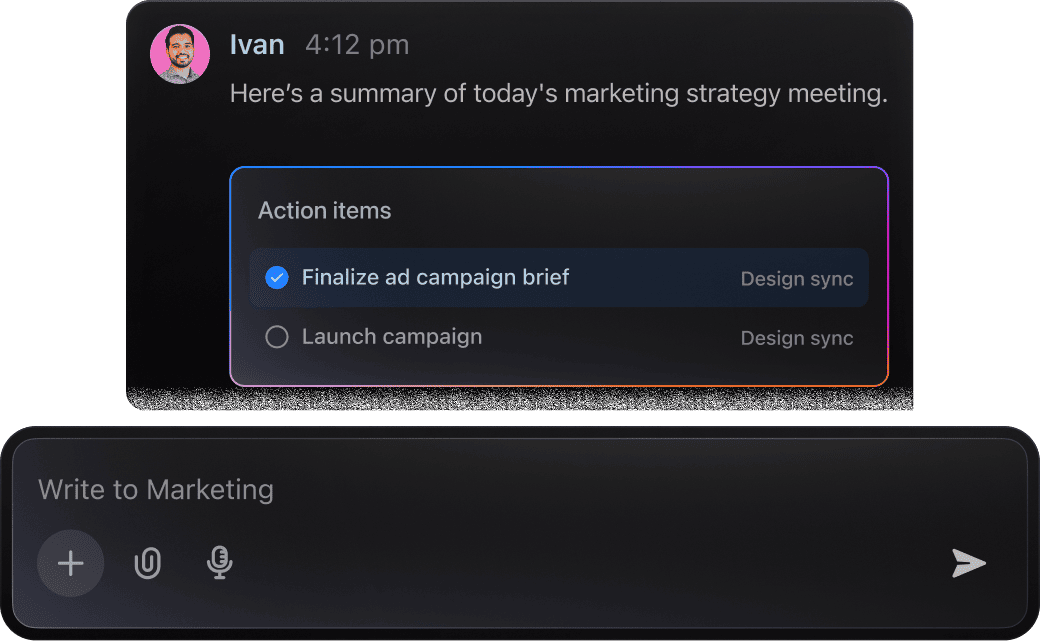
From Concept to Construction
Technical teams handle complex documentation and detailed feedback constantly. ClickUp Brain empowers you to pinpoint key tasks, identify risks early, and create clear next steps from these records.
Leverage ClickUp Brain to:
- Condense intricate engineering dialogues captured in tasks or Docs
- Transform detailed design annotations into actionable engineering assignments
- Compose problem analyses or project handoff briefs effortlessly
- With Brain Max, instantly retrieve past design choices, component evaluations, or project conversations across your workspace—eliminating tedious searches through technical files.
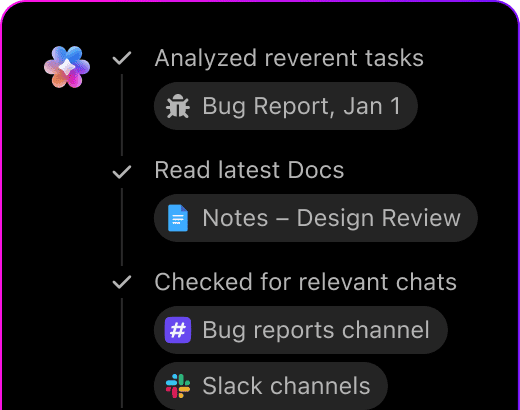
Expository Writing with ClickUp Brain
Crafting clear, informative expository texts involves managing outlines, research notes, and drafts seamlessly. ClickUp Brain simplifies this process—distilling key points and producing consistent, engaging content.
Leverage ClickUp Brain to:
- Extract main ideas from research materials
- Create structured, reader-friendly explanations
- Convert peer reviews into revision tasks
- Brain Max enhances this by providing quick access to previous writing samples or related topics, supporting long-term content development.
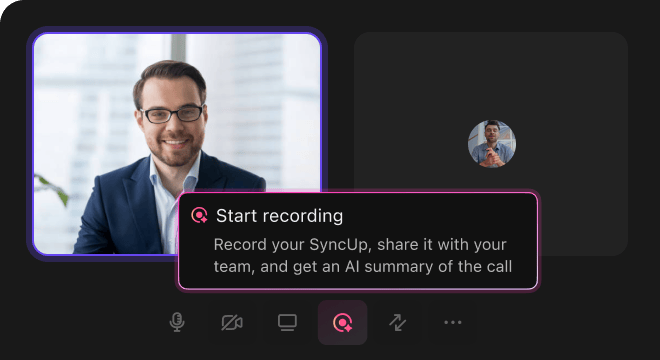
Advantages of AI
How AI Prompts Revolutionize Expository Writing with ClickUp Brain
Integrating AI prompt workflows transforms your expository writing process:
- Accelerate brainstorming: Quickly develop outlines, thesis statements, and supporting arguments
- Reduce revisions: Identify logical gaps and inconsistencies before drafting
- Align your team: AI-crafted summaries and notes ensure everyone shares the same understanding
- Make informed choices: Generate research insights and citation suggestions effortlessly
- Elevate your essays: Unlock fresh perspectives that enhance clarity and depth.
Everything integrates smoothly within ClickUp, turning your AI-generated content into organized docs, actionable tasks, and insightful dashboards that drive your writing projects forward.
Prompt Guidance
Crafting Effective Prompts for Expository Writing
Clear prompts unlock clearer explanations.

Define the writing context clearly
Vague prompts yield vague content. Specify details like the subject matter (e.g., “climate change impacts” or “historical events of WW2”), target audience (e.g., “high school students” or “policy makers”), and purpose (e.g., “informative overview” or “cause and effect analysis”).
Example: “Explain the causes of the French Revolution for college freshmen.”

Use comparative prompts to deepen understanding
AI excels at drawing distinctions and parallels. Employ prompts like “compare X and Y” to explore differences in theories, events, or concepts.
Example: “Compare the economic policies of Keynesianism and Monetarism.”

Frame prompts around specific writing goals
Approach prompts as clear tasks for AI to accomplish. Instead of “Write about photosynthesis,” focus on the intended outcome:
Example: “Describe the photosynthesis process emphasizing its role in plant energy production.”

Specify the desired output format
Need an outline, bullet points, or a summary? Make it explicit. AI delivers better when the structure is defined.
Example: “Provide a bullet list of key factors contributing to urbanization with brief explanations.”
Elevate Expository Writing with ClickUp Brain
ClickUp Brain goes beyond organizing tasks—it's your partner in crafting clear, compelling expository content at every stage.





